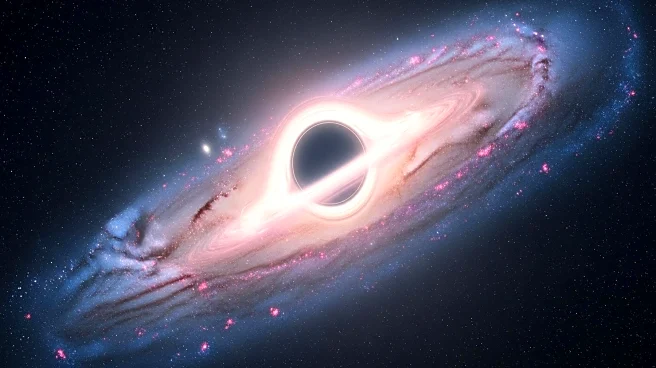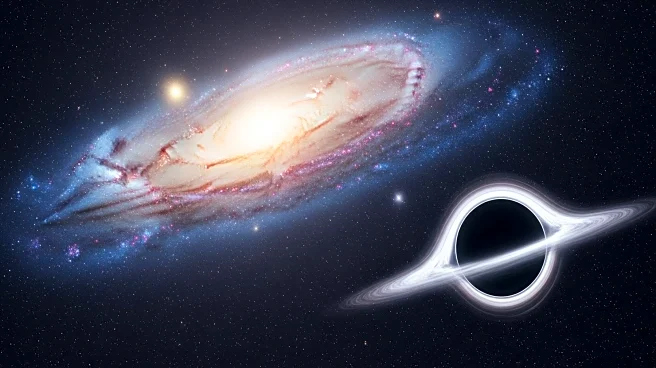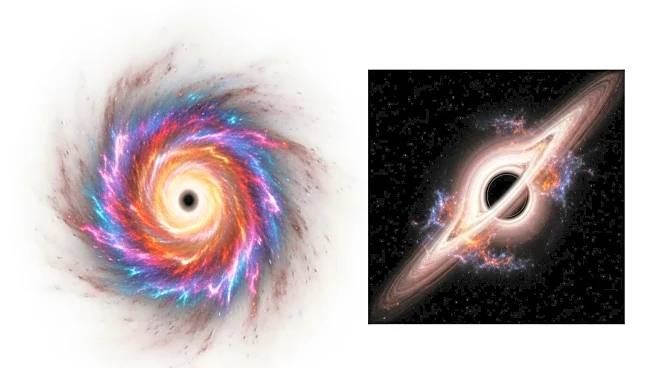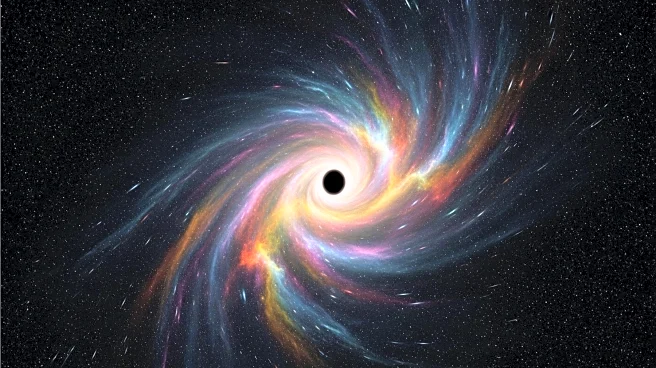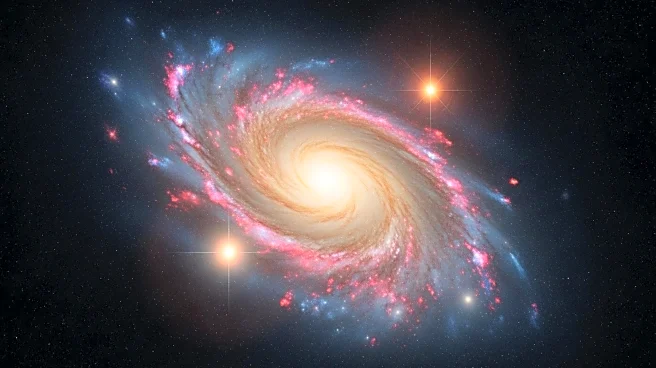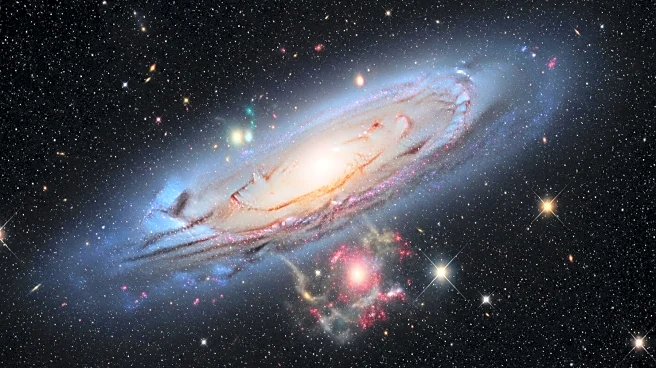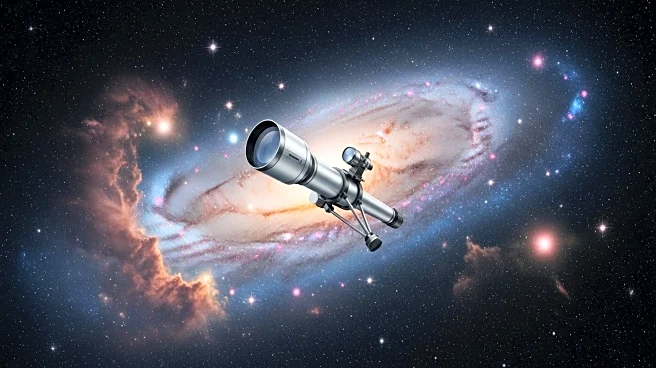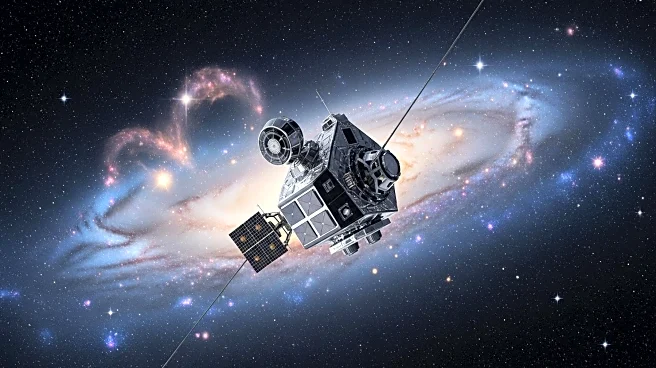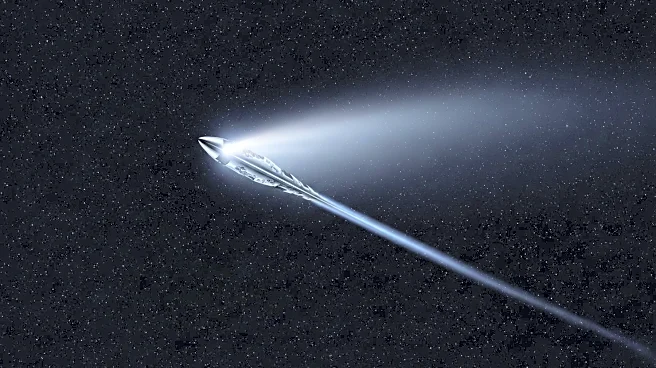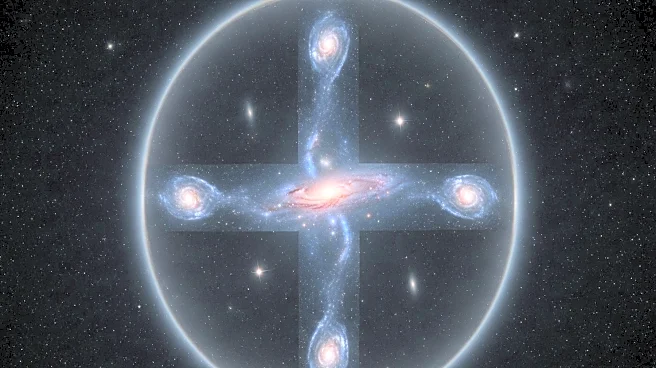What's Happening?
NASA's Chandra X-ray Observatory has identified a black hole growing at a rate surpassing the Eddington limit, a threshold that typically restricts the growth of black holes. This discovery involves a quasar, RACS J0320-35, located approximately 12.8 billion light-years from Earth, observed as it existed 920 million years after the Big Bang. The black hole, with a mass about a billion times that of the sun, is producing more X-rays than any other known black hole from the universe's first billion years. The rapid growth rate, estimated at 2.4 times the Eddington limit, suggests that the black hole may have originated from an exotic process involving the collapse of a dense gas cloud with low heavy element content.
Why It's Important?
The discovery of a black hole growing beyond the Eddington limit challenges existing theories about black hole formation and growth. Understanding how such massive black holes can form and grow quickly after the Big Bang is crucial for astrophysics, as it may provide insights into the early universe's conditions and the processes that led to galaxy formation. This finding could also help scientists refine models of black hole growth and test hypotheses about their origins, potentially leading to new theories about the universe's evolution.
What's Next?
Researchers will continue to analyze the data from Chandra and other telescopes to better understand the mechanisms behind the rapid growth of RACS J0320-35. Further studies may focus on the role of jets of particles moving at near-light speed, which are rare in quasars and could be linked to the black hole's growth rate. These investigations could lead to breakthroughs in understanding the formation of the first generation of black holes and their impact on the universe's development.
Beyond the Headlines
The implications of this discovery extend to the broader understanding of cosmic evolution and the conditions necessary for the formation of supermassive black holes. The presence of jets in RACS J0320-35 may indicate a unique interaction between the black hole's growth and its environment, offering clues about the dynamics of early universe phenomena. This research could also influence future observational strategies and the development of new technologies for studying distant cosmic objects.

